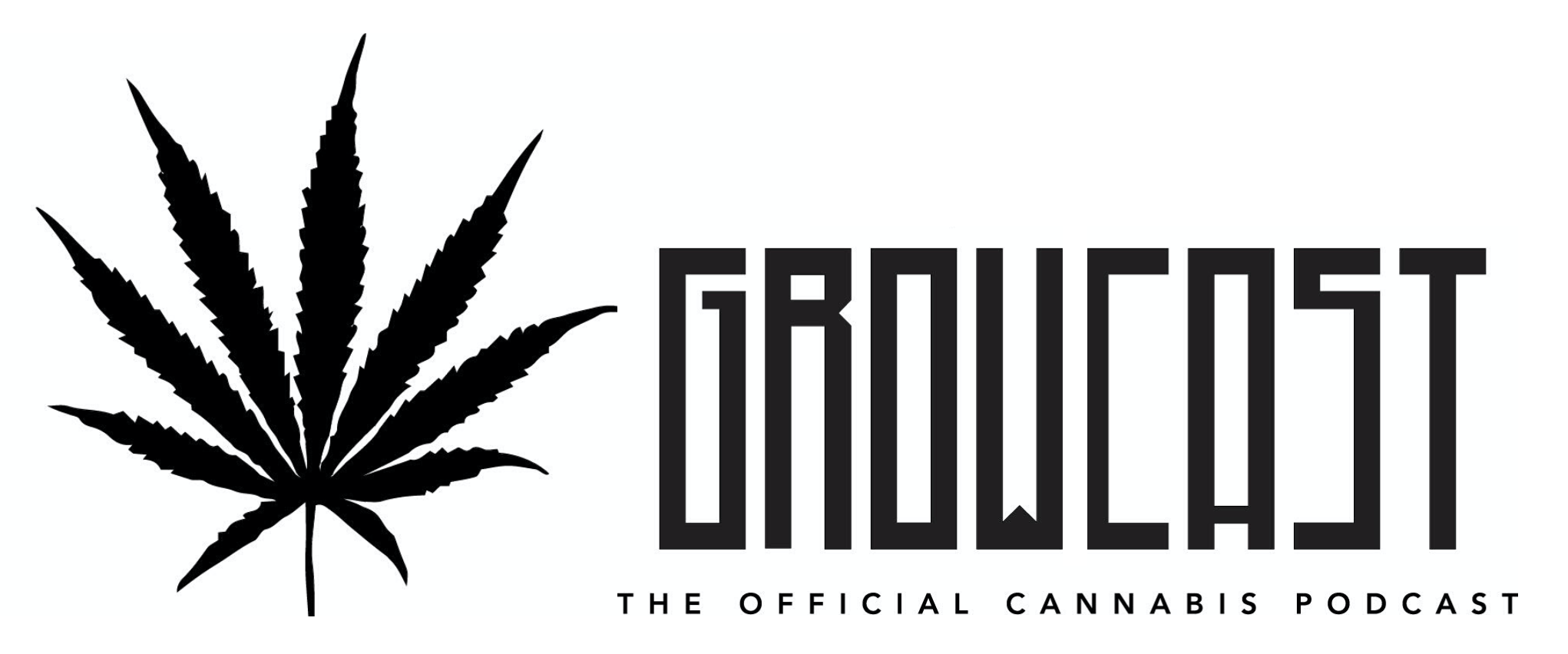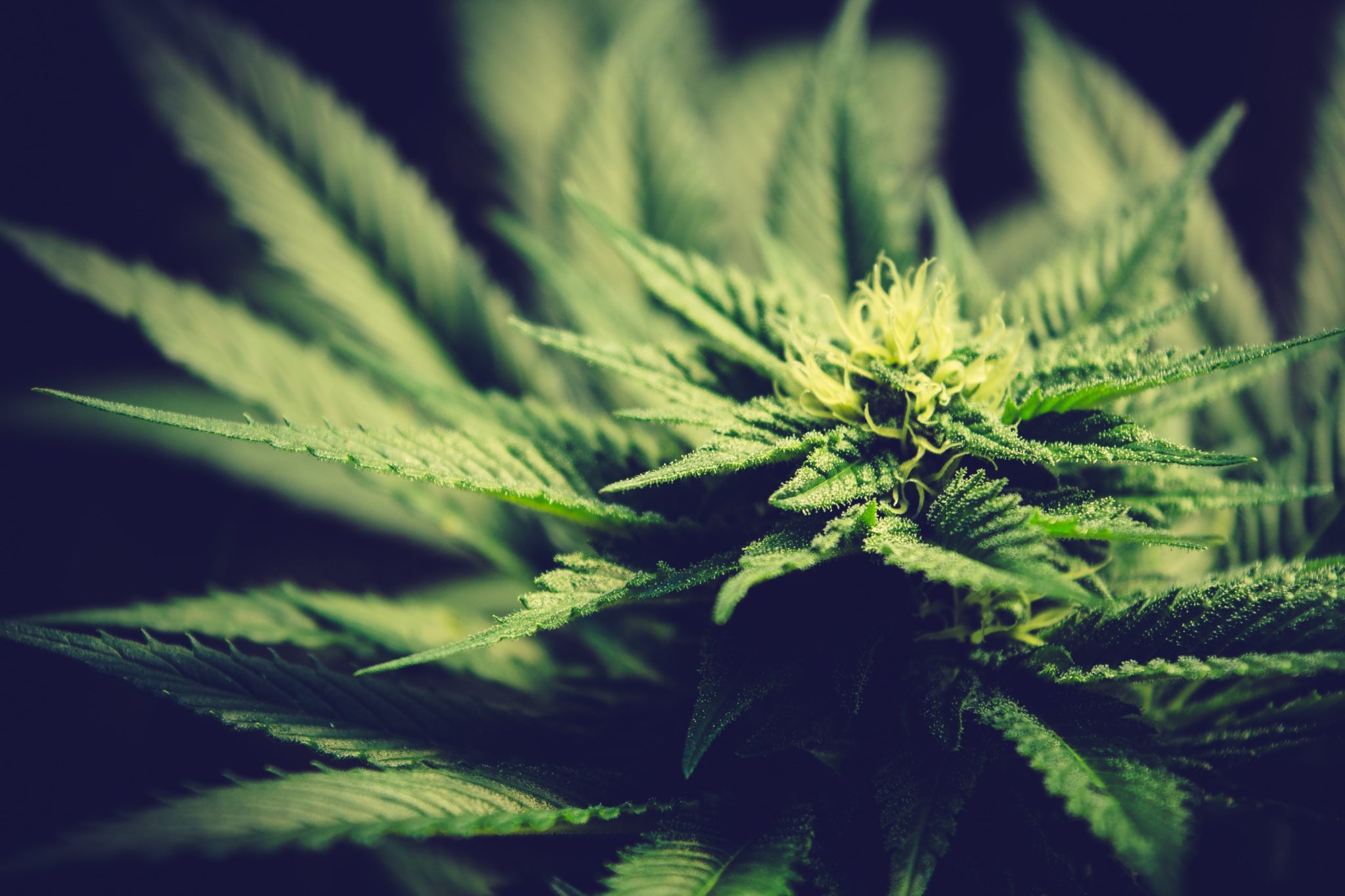As a cannabis grower and consumer, you’ve likely spent quite a bit of time gazing at the beauty of cannabis buds. In doing so, you’ve probably noticed the complexity of the different parts that make up the structure of the cannabis plant. From the tiny trichomes to the fiery, orange hairs, a cannabis plant’s anatomy is truly a fascinating world of its own.
We’ve put together this brief guide to understanding cannabis plant anatomy, giving an overview of the different features of the cannabis plant and functions they serve, so you can gain deeper knowledge as a cultivator.
First: Male vs Female Cannabis Plants
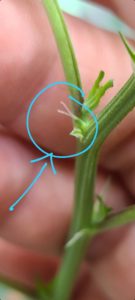
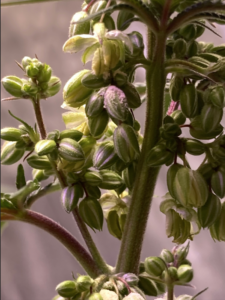
*Female left, male right*
There are male and female cannabis plants, as well as hermaphrodite plants – those of both genders. The male cannabis plants fertilize the female plants in order to start the production of seeds. The resin-emanating flowers produced by the female cannabis plants are trimmed down to buds by the cultivators, and these are the flowers that are dried into the nugs we smoke as consumers.
Most plants in nature don’t even have genders, whereas cannabis has male and female genders AND have the incredible ability to intersex- sometimes even midway through their life cycle.
These intersex plants present both male and female organs, making it possible to self-pollinate during the flowering stage. This is something you do NOT want, as this self-pollination contaminates seedless sinsemilla plants, the plants that produce highly potent flowers.
HIghly potent cannabis is great, right? Check out this post on why traditionally grown cannabis is typically more potent than corporate cannabis.
Understanding the Anatomy of Cannabis Plants
The flowers tend to hog the spotlight when it comes to the cannabis plant, primarily because they are what is consumed the most – or used to create extracts and concentrates. Even though the flowers have their important role, every part of the cannabis plant anatomy plays a salient role in giving those cannabis flowers their unique and sought-after characteristics.
Cola
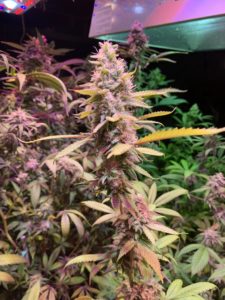
A cluster of buds tightly grown together. The main cola (apical bud) forms at the top of the cannabis plant. Smaller colas are found on budding sites of the plant’s lower branches.
Stigma & Pistil
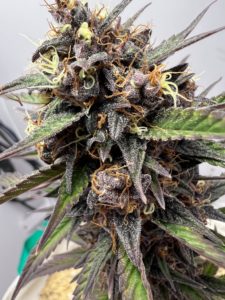
Stigmas are the vibrantly colored, wispy strands found on the pistil, which is what houses a flower’s reproductive organs. The stigma’s purpose is to collect pollen from the male cannabis plants. They change color throughout the plant’s growth cycle, starting out white and deepening over time, eventually becoming yellow, orange, tan, red, or even pink and purple. Stigmas play a significant role in the reproductive cycle, yet do not significantly affect the taste, aroma, or potency of the flower.
Roots
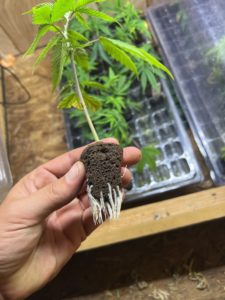
The roots of the cannabis plant are the foundation for its growth and essential for cultivating a healthy plant with desirable flowers. There are three main functions of the cannabis plant root system: anchoring the plant within the substrate, hydrating and feeding the plant nutrition through microbial relationships, and storing carbohydrates and glucose produced by photosynthesis.
The taproot is the first bit that emerges from a germinated cannabis seed. The taproot grows down into the soil, where it searches for nutrients and water to help promote growth. After the taproot has sufficiently spread, fibrous roots begin to branch off from the taproot to create an underground system of roots. Finally, thick adventitious roots branch off the cannabis plant’s stem, allowing growers to reproduce and clone plants.
Root Crown
The Root Crown, also known as the collar or neck of the cannabis plant, is formed when the stem and the roots adhere to one another. The crown divides the upward and downward growth, where the vascular system of the plant switches from the stem to the roots, and is where the most significant portion of the cannabis plant cell division takes place. The root crown is an essential part of the cannabis plant anatomy, and generally rests near the surface of the soil, where aeration is at maximum levels. It can also be transplanted and anchored deeper below the ground to encourage more adventitious roots to generate.
Flowers

Male staminate cannabis flowers look a lot like small, green balls on skewers, and are composed of five male petals. These petals open up to produce pollen-producing stamens that release pollen, leading to the death of the male plant. The male cannabis flowers contains lower levels of terpenes and cannabinoids than their female counterparts.
The female pistillate flowers grow into tight clusters and, once pollinated, the cannabis plant will devote all of its energy to producing seeds. These seeded buds contain lower levels of terpenes and cannabinoids, which is why cannabis growers want to cultivate seedless sinsemilla flowers.
Bract and Calyx
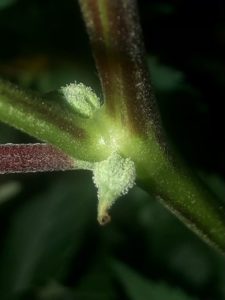
The bract is what holds a female cannabis plant’s reproductive organs. They resemble green, tear-drop-shaped leaves, and the bract is covered in resin-filled glands that produce higher concentrations of cannabinoids than any other part of the cannabis plant anatomy. The bract also holds the calyx, a translucent layer covering the ovule on the cannabis flower’s base. This cannot typically be seen, as it is tucked far inside the bract.
Trichome
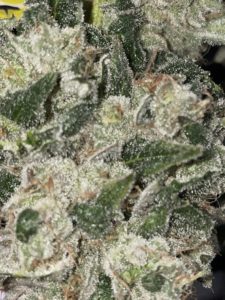
Trichomes are very, very small in size, but you can easily seen the shiny coating of crystal-like resin covering a cannabis bud. Secreted out through mushroom-shaped, translucent glands that cling to the stems, leaves, and calyxes of the cannabis plant. This resin is often referred to as kief after it has dried and has been knocked off the flowers. Trichomes are responsible for protecting the plant against environmental factors and predators. They release terpenes and cannabinoids, and it is their production that makes hash production possible.
Stalk and Nodes
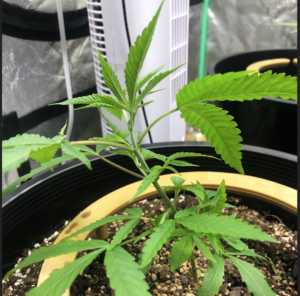
The stalk of the cannabis plant is what keeps the growth upright and supports the weight of the plant. It also houses the vascular system that transports nutrients and moisture from the roots to the leaves via xylem cells. It moves starches and sugars from photosynthesis processes around the inside of the plant for utilization or storage through phloem cells. These are the cells that get harvested for the hemp fibers. The stalk is divided up by nodes, and the seedlings grow opposite pairs of leaves and nodes in the beginning, but then begin to grow alternatively, as the plant grows in size.
The Seed

The seed is where everything is born. A mature, healthy cannabis plant seed is round, with one flatter end and one pointed end. It has a hard, tough outer casing that prevents the seed from becoming damaged. A seam runs down the side of the housing that opens during the germination stage.
Cannabis plant seeds vary greatly in size, and can have three to thirteen serrated, veined leaflets.
Leaves and Petioles
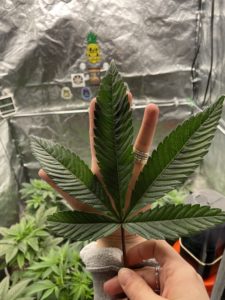
The plants have both small and large leaves that grow in a fan shape, which are removed during harvesting. Leaflets conjoin and adhere to the branch or stalk by a leaf-steam called a petiole. These also vary in length and color, depending on the variety and health of the cannabis plant.
Admiring the Beauty of the Cannabis Plant Anatomy
It’s so easy to become enchanted by the stunning flowers of a cannabis plant, but it’s also important to give attention to the rest of the cannabis plant anatomy and the hard work the these parts do to produce the buds we all love to puff on. Learning more about the cannabis plant growth process and what helps it to thrive enables you as a cultivator to better hone your skills and grow the best possible buds you can get out of each cannabis plant in your garden.
Written for GrowCast by Alexia P. Bullard
